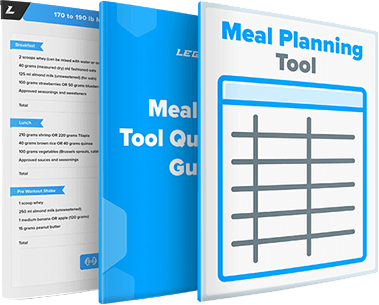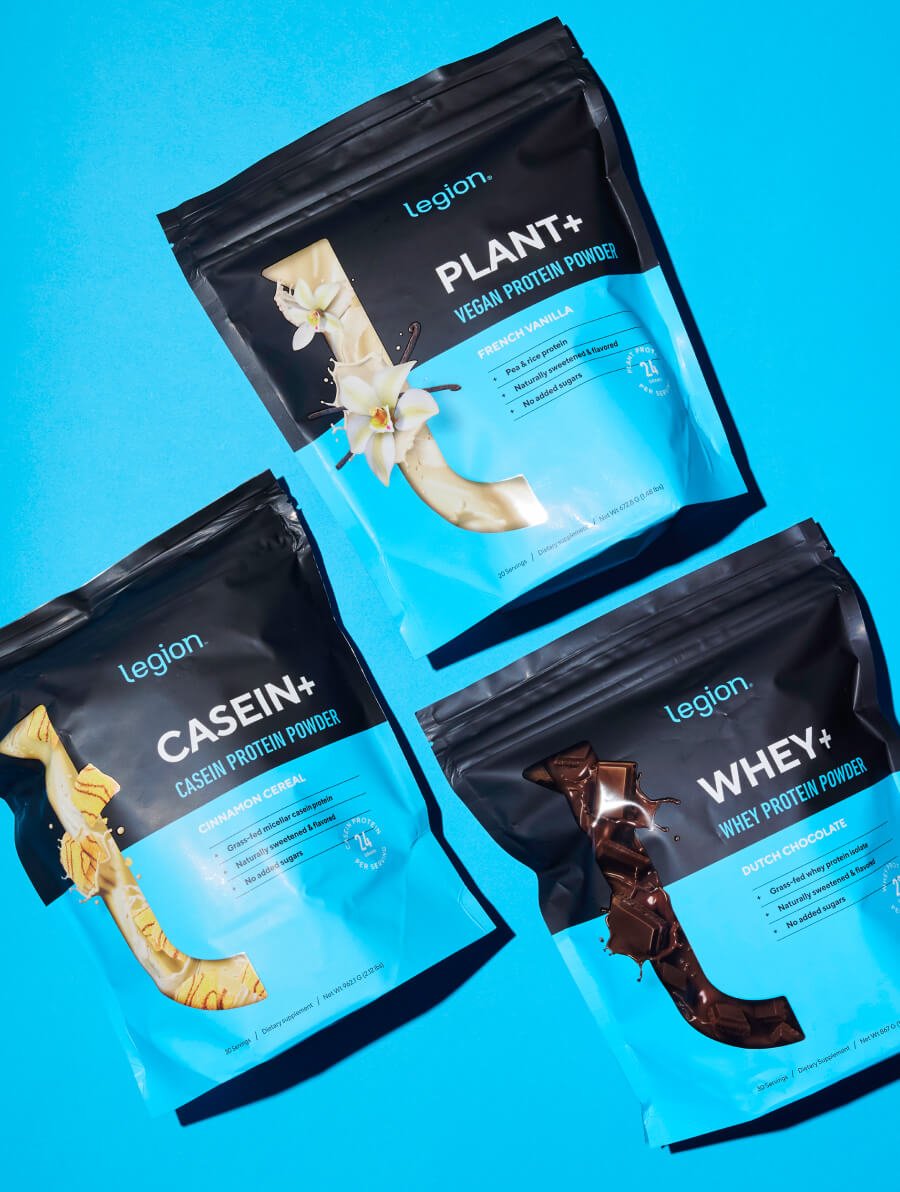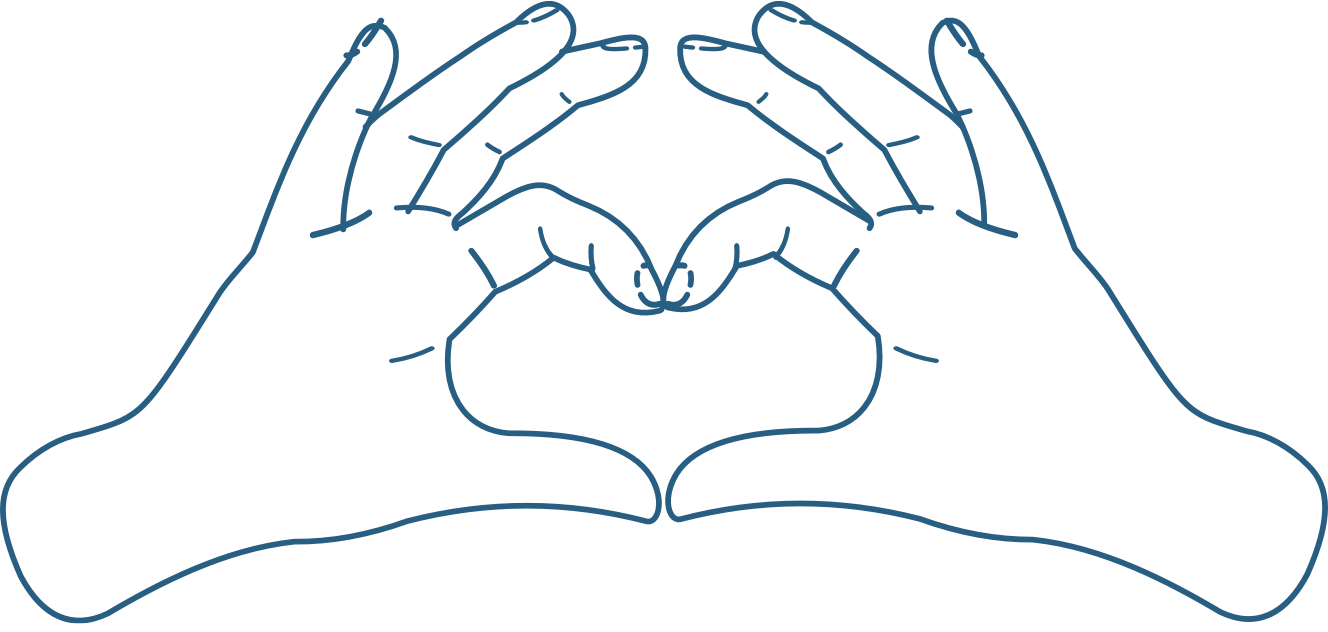Listen on Apple Podcasts | Listen on Spotify | Listen on YouTube
Most people know that exercise is good for them.
And most also know that not exercising is bad for them.
Despite that, most people fail to meet even the bare minimum recommendations for physical activity (2.5 hours of moderate exercise or a little over an hour of intense exercise).
Just 22.9 percent of Americans hit minimum activity guidelines, not even half (46 percent) of Europeans exercise or play sports, and only 16 percent of Canadians perform the recommended levels of activity.
Then, of course, there’s a smaller group of people who go to the opposite extreme. The Ironman triathletes, gym rats, and so forth who spend every spare second in the gym or doing cardio, largely in the belief that more exercise is always better.
But, what about the rest of us?
What about people who want to be fit, healthy, and happy, who also have jobs, families, and other obligations that limit how much time we can spend working out?
And what if we don’t just want to stave off disease and dysfunction, but also build a body we’re proud of?
You’ll learn the answers to all of these questions in this podcast.
The long story short is you don’t need to exercise all that much to stay healthy, but building a body you can be proud of takes slightly more work. Even then, though, it doesn’t take as much time or effort as you might think.
Time Stamps:
4:29 – What is the minimum amount of exercise that people should be doing?
11:27 – How does resistance training compare to cardio?
16:16 – How much exercise is optimal for being as healthy and as functional as possible for as long as possible?
Mentioned on The Show:
What did you think of this episode? Have anything else to share? Let me know in the comments below!
Transcript:
Welcome to another episode of Muscle for Life. I’m your host, Mike Matthews, and thank you for joining me today to learn more about getting fit and healthy. Of course. And today’s episode is about how much exercise should we be doing to optimize our health. Now chances are you know that exercise is good for your health.
You know that not exercising is bad for your health. Many people know this, of course, including many people who don’t exercise. Did you know, for example, that just 23% of Americans hit the minimum activity guidelines and not even. About 46% of Europeans exercise or play sports. And in Canada it’s only about 16% of people who perform the recommended levels of activity.
And on the other end of the. Spectrum. At the extreme end of this other end, you have a very small group of people who are exercising a lot. You have triathletes, you have gym rats, you have people who spend just about every free minute they have doing something physical. And many of these people think that exercise works in a dose response manner, meaning more exercise you do, the healthier you are.
And that’s true up to a point. But you. Overdo it, and we will get into that in this podcast. And so then where does that leave people like us, people who want to be fit. We want to be healthy, we want to be happy, but we also have jobs and many of us have families and we have social obligations and other obligations.
There are limitations on our time. We can only give so much. Working out, and if you’re like me, you don’t just want to stave off disease and dysfunction. That’s the bare minimum we want out of our exercise habit. We also want to have a great physique. We want to have more muscle than average, and that’s true for men and women.
We want to have lower body fat levels than average. And so how does that factor into. Exercise equation, how much exercise does it take to achieve that as well as at least most of the health benefits that exercise can provide us? All of that is what I am going to be talking about in today’s episode.
Also, if you like what I am doing here on the podcast and elsewhere, definitely check out my sports nutrition company Legion, which thanks to the support of many people like you, is the leading brand of all natural sports supplements in the world. And we’re on top because every ingredient. Dose in every product is backed by peer-reviewed scientific research.
Every formulation is 100% transparent. There are no proprietary blends, for example, and everything is naturally sweetened and flavored. So that means no artificial sweeteners, no artificial food dyes, which may not be as dangerous as some people would have you believe. But there is good evidence to suggest that.
Many servings of artificial sweeteners in particular every day for long periods of time may not be the best for your health. So while you don’t need pills, powders, and potions to get into great shape, and frankly, most of them are virtually useless, there are natural ingredients. That can help you lose fat, build muscle, and get healthy faster.
And you will find the best of them in legion’s products to check out everything we have to offer, including protein powders and protein bars, pre-workout, post-workout supplements, fat burners, multivitamins, joint support, and more. Head over to www.buy legion.com. B y legion.com. And just to show how much I appreciate my podcast peeps, use the coupon code M F L at checkout and you will save 20% on your entire first order.
So again, if you appreciate my work and if you wanna see more of it, and if you also want all natural evidence-based supplements that work, please do consider supporting Legion so I can keep doing what I love, like producing more podcasts like. All right. Let’s start this discussion with the minimum amount of exercise that people should be doing.
Most research shows that if you just want to reduce your risk of dying an untimely unnatural death, as little as 15 minutes of light exercise per day is enough to make a pretty big difference. Now, of course, more exercise is better, but that’s really where the benefits start to. Apparent. For example, a study conducted by the National Health Research Institutes of Taiwan looked at the exercise habits and the life expectancy of 416,175 people over the course of 12 years.
And what the researchers found is that the people who averaged just 15 minutes of exercise per day, 14% reduced risk of all cause mortality, death from any and all causes, as well as a three year longer life expectancy than people who were inactive. What’s more for every additional 15 minutes of daily exercise, beyond that minimum of just 15 minutes per day, these scientists saw a further reduction in all cause mortality by.
4%. So at 15 minutes of exercise per day, a 14% reduced risk of all cause mortality. At 30 minutes of exercise a day in 18% reduced risk of all cause mortality. And the researchers observed a reduction in all cancer mortality. So death from any form of cancer by about 1% for every additional 15 minutes of exercise.
And again, Is an absolute reduction in risk, not a relative reduction in risk. Now, to really drive this point home, think of it this way, according to the data in this study, if you were to exercise an hour per day, you’d have about a 28% lower risk of dying from any and all causes than someone who doesn’t work out.
And other studies have demonstrated similar results. For example, a study conducted by scientists at Gene Monet University involved the analysis of over 122,000 people, and they found that exercising just 15 minutes per day reduced all cause mortality by about 22%. Yet another study. The matter was conducted by scientists at the National Cancer Institute, and it found almost the exact same result when they looked at data from over a half of a million people.
And in case you’re wondering, exercise in most of these studies, Was actually pretty easy. We’re not talking about intense weightlifting or high intensity interval training. We’re talking about walking, jogging, maybe some gentle cycling. And so that just goes to show how powerful exercise is and how crucial it is to staying healthy and to living a long and disease free life.
Now, the reasons for this, the physiological, the mechanical reasons are. My, They include improved body composition, improved blood lipoprotein profiles, and that means lower triglyceride levels. It means lower LDL cholesterol levels, the type of cholesterol that people generally think of as bad. It’s not quite that simple, but what is true is if your LDL levels are too high and your HDL levels are too low, that’s not good.
That does not bode well for. Heart health in your heart function. And so anyway, some of the other major physiological benefits of exercise also include improved blood glucose levels, so glucose control, insulin sensitivity lower levels of blood pressure lower amounts of systemic inflammation, decreased blood coagulation.
Improved coronary blood flow, improved cardiac function, improved endothelial function, which refers to cells that line the inside of our blood vessels and our lymphatic vessels. So you’re gonna get better blood flow and. Lymph flow, as well as lower levels of stress and anxiety and the list hammers on.
There are many ways that exercise benefits our body. You could look at it this way. Exercise enhances just about every important physiological process that keeps us healthy and keeps us alive. It is very similar to sleep in that regard. If you exercise everything in your body, That matters. Just about everything is going to run better.
And the same thing goes for sleeping well and sleeping enough. If you get enough high quality sleep, just about every major important process that keeps us alive and keeps us disease and dysfunction free is going to work better. And this fact is also highlighted by what happens if you. Exercise. So according to the World Health Organization, inactivity accounts for about 6% of global deaths and is the fourth leading risk factor for mortality behind high blood glucose, which is just over 6% tobacco use, which is about 9% and high blood pressure.
Which is about 13%. And then other conditions aside from high blood glucose levels and high blood pressure that are linked with poor diet and lack of exercise account for even more deaths. What’s more the W H O estimates that. Inactivity is the primary cause in around 21% of breast cancer cases, 25% of colon cancer cases, 27% of diabetes cases, and 30% of coronary heart disease cases.
And so what that means then is, Inactivity, just not moving your body enough is one of the leading causes of preventable death and disease, and that’s why the W H O recommends that adults do about 150 minutes of moderate cardio, or 75 minutes of intense cardio and resistance training two or more days per week, as well as some mobility as time allows, stretching, yoga, something like that.
If you like what I’m doing here on the podcast and elsewhere, definitely check out my sports nutrition company Legion, which thanks to the support of many people like you, is the leading brand of all natural sports supplements in the world. Now, so far I’ve been talking about exercise, the importance of exercise, moving your body, But how does resistance training compare to cardio?
Cardio does great things in the body. It provides many health benefits, and if you really want to optimize your health, if you really want to be as healthy as possible for as long as possible, you should be. Cardio. Even if you are doing resistance training regularly, even if you’re doing quite a bit of resistance training, even if you’re like me and you’re lifting weights five, six hours per week, if you add cardio into your regimen, you will benefit from it.
You are not going to get. All of the health benefits of cardio from just lifting weights. And if you wanna learn more about that, check out a podcast that I recorded a couple of months ago now called Should You Do Cardio? If You Lift weights, Science Says Yes. And in that podcast I explain specifically what you get from resistance training in the way of health benefits and what you get in the way.
Cardio and why combining them really is the best for overall health and wellbeing. Now, if you listen to that podcast, you will also learn about the unique benefits of resistance training because the opposite is true as well. If all you do is cardio and you don’t do any sort of resistance training, you are not going to.
Optimal health and you are not going to achieve optimal longevity in particular because cardio does not help preserve lean body mass, and that is very important for maintaining health and function, especially as we get older. It does not help maintain our resting metabolic rate, which is very important for maintaining a healthy body composition and preventing the slow weight gain that many people experience as.
Older, which in time turns into a real problem. If you only are five pounds or maybe 10 pounds heavier than your ideal weight or ideal body composition, you can be perfectly healthy. But when you are 30 plus pounds heavier than you should be, and it’s all fat. And you’ve lost muscle, which does happen as we get older.
If we don’t do anything about it now, the risk of disease and dysfunction has gone way up. And now it is something to be concerned about. And because I love to beat the drum for resistance training. Cardio’s great, but I look at it. As supplementary in the scheme of things, I want people spending most of their time training their muscles and a minority of their time doing cardio.
That is the formula for success. Resistance training can provide health benefits that many people are not aware of. Like for example, it improves heart health. Now, if that is. Surprising to you? To some people it is because for a long time, experts in gurus were saying that resistance training and intense weightlifting in particular is bad for your heart, period.
It puts too much stress on it. We now know that is not true. We know also that resistance training is great for improving bone density, which of course is very important as we get older because when we are in. Seventies and beyond. We want to be able to function and not fall down and break a hip, for example, or break something because that can quickly spiral outta control and even lead to death.
Resistance training has also been shown to improve sleep quality, which then makes everything in life better and more enjoyable. It improves cognitive. Abilities and this is a very unique benefit of resistance training. It’s great for improving self-esteem. Cardio, not so much. If it helps you lose fat, yes, then that can certainly boost your confidence.
But there’s something special about adding some muscle to the right places on your body for. Just making you feel better every day. Look in the mirror like what like how your clothes fit, like the compliments you get from people. And then there’s really something to be said for being strong and not just for the purpose of lifting heavy weights in the gym.
That is fun and that can be a bit of a rush, but just knowing in general that you have a strong and re. Body that can go a long way in improving your outlook on your abilities and your life. And so if you are not currently doing much exercise, or if you are doing maybe only cardio and you’re not doing much or any resistance training, I hope I have sold you.
On increasing the amount of exercise you’re doing, if you are inactive or increasing, or starting resistance training if you are not doing any. And as for how much you should be doing, if we want to get most of all of the benefits that I have discussed, if we want to really optimize our health and our performance and our vitality and our longevity and our self-esteem, here’s the sweet spot.
It is about. To six hours of resistance training per week, and about two to maybe three hours of cardio per week. Now, you don’t have to do that much exercise if you can’t or don’t want to. If you did half of that amount, if you did, let’s say two or three hours of resistance training per week and maybe one to one and a half hours of cardio per week, that is very good and you are going to enjoy a much lower risk of many types of diseases and.
And you can gain plenty of muscle and strength, and you can improve your cardiovascular endurance a lot, and you can reap many of the rewards that exercise has to offer. But again, we’re talking about how much exercise is optimal for being as healthy and as functional as possible for as long as possible.
Again, four to six hours of. Resistance training per week and two to three hours of cardio per week. And I should be specific with the cardio because most of that can be low or maybe moderate intensity, and a minority of that time should be high intensity. That does not have to be two or three hours of hit workouts per week.
For instance, if you are resistance training regularly and want to. Make progress in those workouts. I actually wouldn’t recommend more than maybe an hour or so of hit per week because it is much more difficult to recover from than lower or moderate intensity cardio, and especially if you’re doing stuff that’s higher impact, which I wouldn’t recommend.
Again, if you want to make as much progress in your resistance training as possible, if you’re gonna do hit, I would not recommend sprints on concrete, for instance, if you. Do hill sprints, that’s a little bit better because it’s less impact. But ideally you do something like bicycle sprints, on a recumbent bike or an upright bike because that added impact causes muscle damage that must be repaired, and if your body is trying to recover from a round of high impact.
Hit and you now are trying to do a squat workout, you will not be able to perform as well in that squat workout than if you hadn’t done the hit workout. Now, as for the resistance training, any resistance training is better than none, but the most effective type of resistance training uses heavy weights.
And to be specific there, I’m talking about weights that are, let’s say about 60 to 70% of one rep max and. And to translate that into rep ranges. So you could think about it that way. Most people could get probably about 12 reps with 70% of their one rep max before their form just falls apart. And that’s it.
That’s the end of the set, right? So think with training, let’s say no higher than 15 reps per set, but ideally probably in the range of at the high. 12 reps per set, and at the low end, depending on how experienced of a weightlifter you are and what you’re doing, you might be using weights that only allow for two reps or three reps.
For instance, you might be up there, 95% of one rep max. And if you are not sure what to do in your programming, check out bigger, leaner, stronger if you’re a man or thinner, leaner, stronger if you are a woman. If. You are a man who has yet to gain his first 20 ish pounds of muscle, regardless of how long you’ve been training and if you’re a woman, about half that.
If you have not gained your first 10 pounds of muscle or so, then bigger than your stronger is for you. If you’re a guy and. Thin, leaner, stronger is for you if you are a gal, and you can just follow those programs and that’s all you really need to get there. And chances are those programs can actually take you a bit further.
But somewhere around, let’s say the 20 to 25 pound mark of muscle gain for men, in about half that for women is where the bigger, leaner, stronger slash thin, leaner, stronger programming slows. In terms of its results, and it becomes more of a maintenance routine. And at that point you just need to work a bit harder and you can upgrade to the Beyond Bigger, Leaner, Stronger program, which is another book.
It’s just the sequel to Bigger, Leaner, Stronger. And of course it is skewed towards men, hence the title. But there’s a lot there for women. And I actually will be creating a female version of the book. I will create beyond thinner, leaner, stronger, but I will not be able to. Until or the earliest would be next year.
And the reason for that is because I am publishing a book with Simon and Schuster for the 40 plus crowd, and it’s going to be releasing next summer. And part of the deal is they do not want me self-publishing anything between now and then. So they want a year of publishing silence from Mike Matthews, and that’s totally normal.
And I understand, I’m not complaining at. However, I can start self-publishing books again, I believe I have to look in the contract, but I believe it’s six months after the release of the 40 plus book, which is called Muscle for Life. So I can start self-publishing books again, basically like December, 2021 or January, 2022.
And then I’m going to be releasing books on a six month schedule. So I have several books already lined up that I’m gonna be releasing and beyond Thinly strong. Will come. I’m not exactly sure where in the sequence it’s going to fall exactly, but let’s just say I think a 2022 release is doable. Maybe summer or Q4 2022.
In the meantime, however, women can read beyond bigger, lean or stronger, get a lot out of it. And if you are a woman who reads it, and if you want help modifying the program, Because the principles apply equally to men and women, but the program I include with the book, and I also include a year’s worth of beyond bigger, leaner, stronger workouts that I programmed in the bonus material for people who don’t want to go through the work of building it all out.
They just would rather do what I tell them to do. Then that’s for them. The thing is though, many women might look at that programming and not like the. Upper body volume, they may want to bring the amount of upper body volume down and increase the amount of lower body volume because that is more reflective of what they’re trying to do at their physique.
And again, the book gives you all the information and all the tools you need to do that. But if you are a woman and you want some help with it, just shoot me an email, [email protected] and I’ll be happy. To do that for you. In fact, I just thought of this. What I’m gonna do is I’m gonna put together a female version of the programming already and I should just include it in the bonus material now that I think about it.
I’m gonna do that, making a note. However, If for whatever reason your bonus material, if it hasn’t made it into the bonus material yet, or if you’re just not exactly sure how it works, again, shoot me an email. Happy to help. And lastly, I’ll just quickly mention, if you are a guy who has already gained his first 20 or 25 pounds of muscle, or if you’re a woman who has already gained her first, call it 10 to maybe 12, 13 pounds of muscle beyond bigger than your stronger is probably going to be more productive for you than bigger than your stronger.
You may wanna read bigger than your strong. Thinly, you’re stronger if you’re a woman because it teaches you the fundamentals. And even if you know a lot or most of what is in there, sometimes it is helpful to be reminded of the things that matter the most and how they work. So you probably can benefit from reading the quote unquote beginners book.
But as far as the program goes, I think beyond bigger, leaner, stronger will be more productive. Even if you can make progress with bigger, leaner, stronger, or thin, leaner, stronger, I think you’ll do a bit. Beyond bigger, leaner, and strong. All right. That’s it for this episode. I hope you enjoyed it and found it interesting and helpful.
And if you did, and you don’t mind doing me a favor, please do leave a quick review on iTunes or. Wherever you’re listening to me from in whichever app you’re listening to me in, because that not only convinces people that they should check out the show, it also increases search visibility, and thus, it helps more people find their way to me and learn how to get fitter, leaner, stronger, healthier, and happier As.
And of course, if you want to be notified when the next episode goes live, then simply subscribe to the podcast and you won’t miss out on any new stuff. And if you didn’t like something about the show, please do shoot me an email at mike muscle for life.com. Just muscle o r life.com and share your thoughts on how I can do this better.
I read everything myself, and I’m always looking for constructive feedback, even if it is c. I’m open to it and of course you can email me if you have positive feedback as well, or if you have questions really relating to anything that you think I could help you with, definitely send me an email. That is the best way to get ahold of me, [email protected].
And that’s it. Thanks again for listening to this episode, and I hope to hear from you soon.
Scientific References +
- Schoenfeld BJ, Peterson MD, Ogborn D, Contreras B, Sonmez GT. Effects of low- vs. High-load resistance training on muscle strength and hypertrophy in well-trained men. J Strength Cond Res. 2015;29(10):2954-2963. doi:10.1519/JSC.0000000000000958
- Boyle PA, Buchman AS, Wilson RS, Leurgans SE, Bennett DA. Association of muscle strength with the risk of Alzheimer disease and the rate of cognitive decline in community-dwelling older persons. Arch Neurol. 2009;66(11):1339-1344. doi:10.1001/archneurol.2009.240
- Hurley BF, Hanson ED, Sheaff AK. Strength training as a countermeasure to aging muscle and chronic disease. Sport Med. 2011;41(4):289-306. doi:10.2165/11585920-000000000-00000
- Annesi JJ, Westcott WW, Gann S. Preliminary evaluation of a 10-wk. Resistance and Cardiovascular exercise protocol on physiological and psychological measures for a sample of older women. Percept Mot Skills. 2004;98(1):163-170. doi:10.2466/pms.98.1.163-170
- Liu-Ambrose T, Donaldson MG. Exercise and cognition in older adults: Is there a role for resistance training programmes? Br J Sports Med. 2009;43(1):25-27. doi:10.1136/bjsm.2008.055616
- Rantanen T, Avela J. Leg extension power and walking speed in very old people living independently. J Gerontol A Biol Sci Med Sci. 1997;52(4):M225-31. doi:10.1093/gerona/52a.4.m225
- Singh NA, Stavrinos TM, Scarbek Y, Galambos G, Liber C, Singh MAF. A randomized controlled trial of high versus low intensity weight training versus general practitioner care for clinical depression in older adults. Journals Gerontol - Ser A Biol Sci Med Sci. 2005;60(6):768-776. doi:10.1093/gerona/60.6.768
- Christou M, Smilios I, Sotiropoulos K, Volaklis K, Pilianidis T, Tokmakidis SP. Effects of resistance training on the physical capacities of adolescent soccer players. J Strength Cond Res. 2006;20(4):783-791. doi:10.1519/R-17254.1
- Phillips SM. Resistance exercise: Good for more than just Grandma and Grandpa’s muscles. Appl Physiol Nutr Metab. 2007;32(6):1198-1205. doi:10.1139/H07-129
- Shaw I, Shaw BS, Brown GA, Cilliers JF. Concurrent resistance and aerobic training as protection against heart disease. Cardiovasc J Afr. 21(4):196-199. http://www.ncbi.nlm.nih.gov/pubmed/20838717. Accessed January 27, 2020.
- Peig-Chiello P, Perrig WJ, Ehrsam R, Staehelin HB, Krings F. The effects of resistance training on well-being and memory in elderly volunteers. Age Ageing. 1998;27(4):469-475. doi:10.1093/ageing/27.4.469
- Bweir S, Al-Jarrah M, Almalty A-M, et al. Resistance exercise training lowers HbA1c more than aerobic training in adults with type 2 diabetes. Diabetol Metab Syndr. 2009;1(1):27. doi:10.1186/1758-5996-1-27
- Westcott WL. Resistance training is medicine: Effects of strength training on health. Curr Sports Med Rep. 2012;11(4):209-216. doi:10.1249/JSR.0b013e31825dabb8
- Shaw BS, Shaw I, Mamen A. Contrasting effects in anthropometric measures of total fatness and abdominal fat mass following endurance and concurrent endurance and resistance training. J Sports Med Phys Fitness. 2010;50(2):207-213. https://www.ncbi.nlm.nih.gov/pubmed/20585300. Accessed January 27, 2020.
- Hunter GR, McCarthy JP, Bamman MM. Effects of resistance training on older adults. Sport Med. 2004;34(5):329-348. doi:10.2165/00007256-200434050-00005
- Westcott WL, Winett RA, Annesi JJ, Wojcik JR, Anderson ES, Madden PJ. Prescribing physical activity: Applying the ACSM protocols for exercise type, intensity, and duration across 3 training frequencies. Phys Sportsmed. 2009;37(2):51-58. doi:10.3810/psm.2009.06.1709
- Zhao G, Li C, Ford ES, et al. Leisure-time aerobic physical activity, muscle-strengthening activity and mortality risks among US adults: The NHANES linked mortality study. Br J Sports Med. 2014;48(3):244-249. doi:10.1136/bjsports-2013-092731
- World Health Organization. Physical Activity: Global recommendations on physical activity for health Consequences of physical inactivity. WHO Reg Off Eur. 2015. doi:ISBN 978 92 4 159 997 9
- Brown JP, Josse RG. 2002 Clinical practice guidelines for the diagnosis and management of osteoporosis in Canada. CMAJ. 2002;167(10). https://www.ncbi.nlm.nih.gov/pubmed/12427685. Accessed January 27, 2020.
- Kerr D, Morton A, Dick I, Prince R. Exercise effects on bone mass in postmenopausal women are site-specific and load-dependent. J Bone Miner Res. 2009;11(2):218-225. doi:10.1002/jbmr.5650110211
- Paffenbarger RS, Jung DL, Leung RW, Hyde RT. Physical activity and hypertension: An epidemiological view. Ann Med. 1991;23(3):319-327. doi:10.3109/07853899109148067
- Katzmarzyk PT, Church TS, Janssen I, Ross R, Blair SN. Metabolic syndrome, obesity, and mortality: Impact of cardiorespiratory fitness. Diabetes Care. 2005;28(2):391-397. doi:10.2337/diacare.28.2.391
- Westerlind KC. Physical Activity and Cancer Prevention - Mechanisms. In: Medicine and Science in Sports and Exercise. Vol 35. ; 2003:1834-1840. doi:10.1249/01.MSS.0000093619.37805.B7
- Dunn AL, Trivedi MH, O’Neal HA. Physical activity dose-response effects on outcomes of depression and anxiety. In: Medicine and Science in Sports and Exercise. Vol 33. ; 2001. doi:10.1097/00005768-200106001-00027
- Kobayashi N, Tsuruya Y, Iwasawa T, et al. Exercise training in patients with chronic heart failure improves endothelial function predominantly in the trained extremities. Circ J. 2003;67(6):505-510. doi:10.1253/circj.67.505
- Warburton DER, Gledhill N, Jamnik VK, Krip B, Card N. Induced hypervolemia, cardiac function, V̇O(2max), and performance of elite cyclists. Med Sci Sports Exerc. 1999;31(6):800-808. doi:10.1097/00005768-199906000-00007
- Hambrecht R, Wolf A, Gielen S, et al. Effect of exercise on coronary endothelial function in patients with coronary artery disease. N Engl J Med. 2000;342(7):454-460. doi:10.1056/NEJM200002173420702
- Rauramaa R, Salonen JT, Seppänen K, et al. Inhibition of platelet aggregability by moderate-intensity physical exercise: a randomized clinical trial in overweight men. Circulation. 1986;74(5):939-944. doi:10.1161/01.cir.74.5.939
- Adamopoulos S, Parissis J, Kroupis C, et al. Physical training reduces peripheral markers of inflammation in patients with chronic heart failure. Eur Heart J. 2001;22(9):791-797. doi:10.1053/euhj.2000.2285
- Blair SN, Goodyear NN, Gibbons LW, Cooper KH. Physical Fitness and Incidence of Hypertension in Healthy Normotensive Men and Women. JAMA J Am Med Assoc. 1984;252(4):487-490. doi:10.1001/jama.1984.03350040017014
- Kelley DE, Goodpaster BH. Effects of physical activity on insulin action and glucose tolerance in obesity. Med Sci Sports Exerc. 1999;31(11 SUPPL.). doi:10.1097/00005768-199911001-00021
- Wallberg-Henriksson H, Rincon J, Zierath JR. Exercise in the management of non-insulin-dependent diabetes mellitus. Sport Med. 1998;25(1):25-35. doi:10.2165/00007256-199825010-00003
- Brenes G, Dearwater S, Shapera R, LaPorte RE, Collins E. High density lipoprotein cholesterol concentrations in physically active and sedentary spinal cord injured patients. Arch Phys Med Rehabil. 1986;67(7):445-450. doi:10.5555/uri:pii:000399938690256X
- O’connor GT, Hennekens CH, Willett WC, et al. Physical exercise and reduced risk of nonfatal myocardial infarction. Am J Epidemiol. 1995;142(11):1147-1156. doi:10.1093/oxfordjournals.aje.a117573
- Tremblay A, Despres JP, Leblanc C, et al. Effect of intensity of physical activity on body fatness and fat distribution. Am J Clin Nutr. 1990;51(2):153-157. doi:10.1093/ajcn/51.2.153
- Warburton DER, Gledhill N, Quinney A. The effects of changes in musculoskeletal fitness on health. Can J Appl Physiol. 2001;26(2):161-216. doi:10.1139/h01-012
- Warburton DER, Gledhill N, Quinney A. Musculoskeletal fitness and health. Can J Appl Physiol. 2001;26(2):217-237. doi:10.1139/h01-013
- Arem H, Moore SC, Patel A, et al. Leisure time physical activity and mortality: A detailed pooled analysis of the dose-response relationship. JAMA Intern Med. 2015;175(6):959-967. doi:10.1001/jamainternmed.2015.0533
- Hupin D, Roche F, Gremeaux V, et al. Even a low-dose of moderate-to-vigorous physical activity reduces mortality by 22% in adults aged ≥60 years: A systematic review and meta-analysis. Br J Sports Med. 2015;49(19):1262-1267. doi:10.1136/bjsports-2014-094306
- Lee DC, Pate RR, Lavie CJ, Sui X, Church TS, Blair SN. Leisure-time running reduces all-cause and cardiovascular mortality risk. J Am Coll Cardiol. 2014;64(5):472-481. doi:10.1016/j.jacc.2014.04.058
- Wen CP, Wai JPM, Tsai MK, et al. Minimum amount of physical activity for reduced mortality and extended life expectancy: A prospective cohort study. Lancet. 2011;378(9798):1244-1253. doi:10.1016/S0140-6736(11)60749-6










